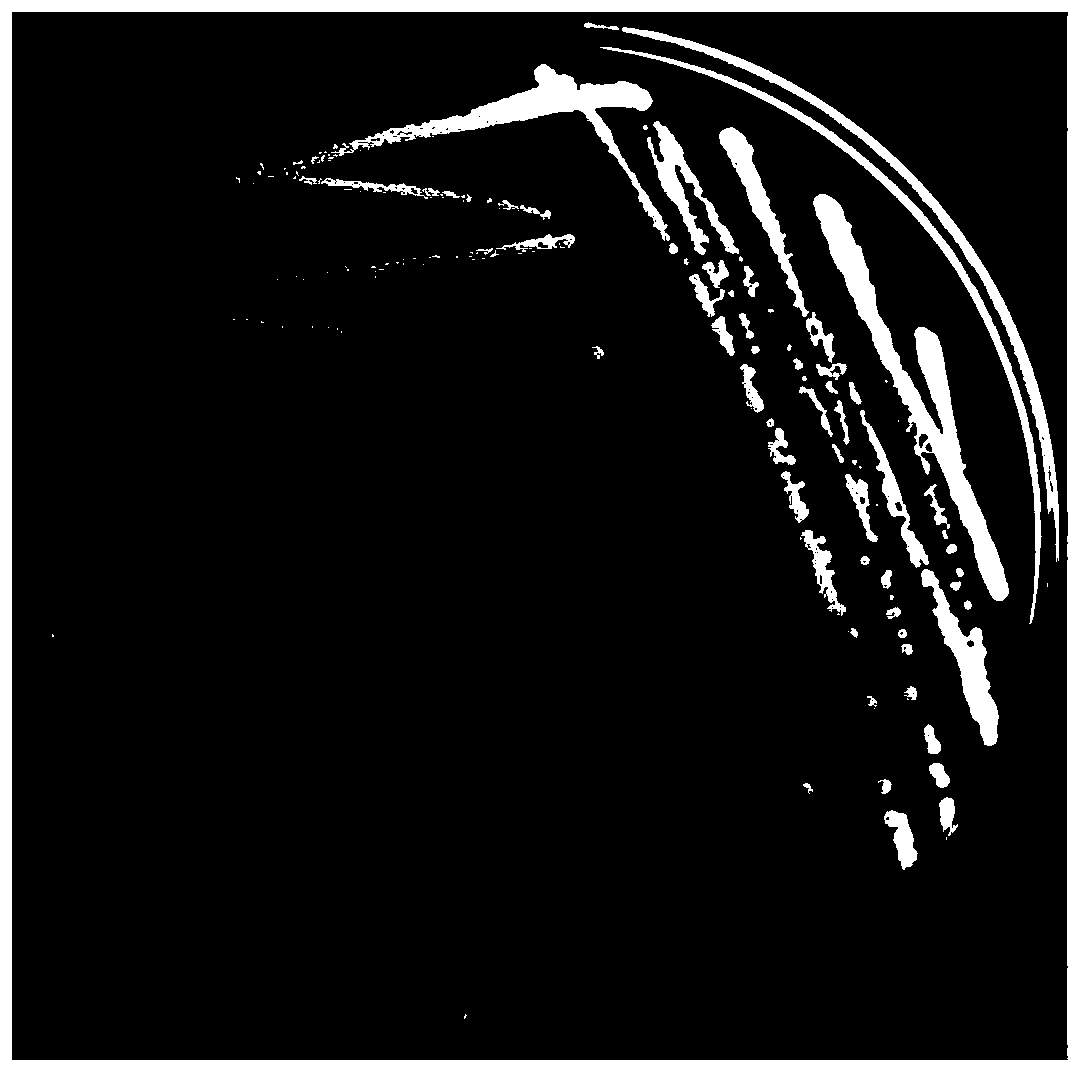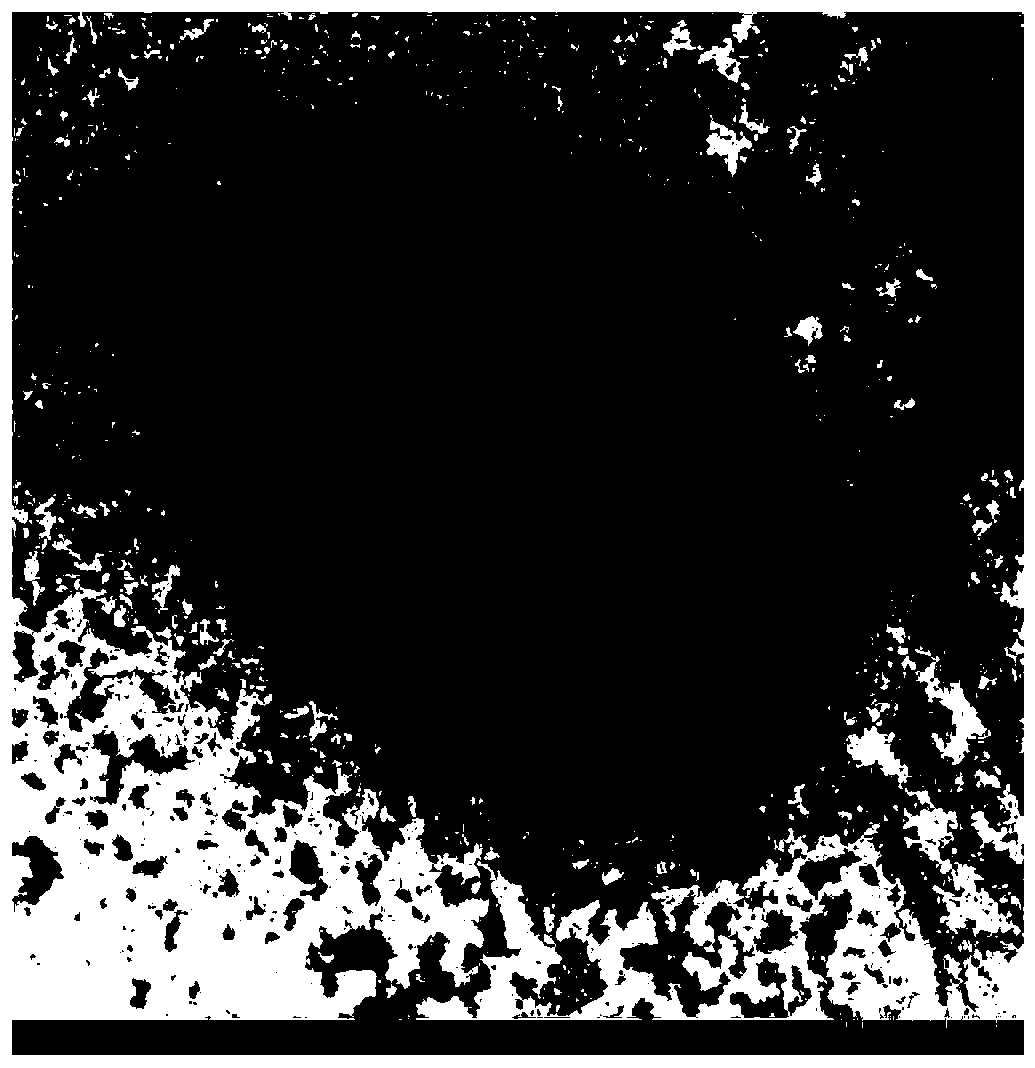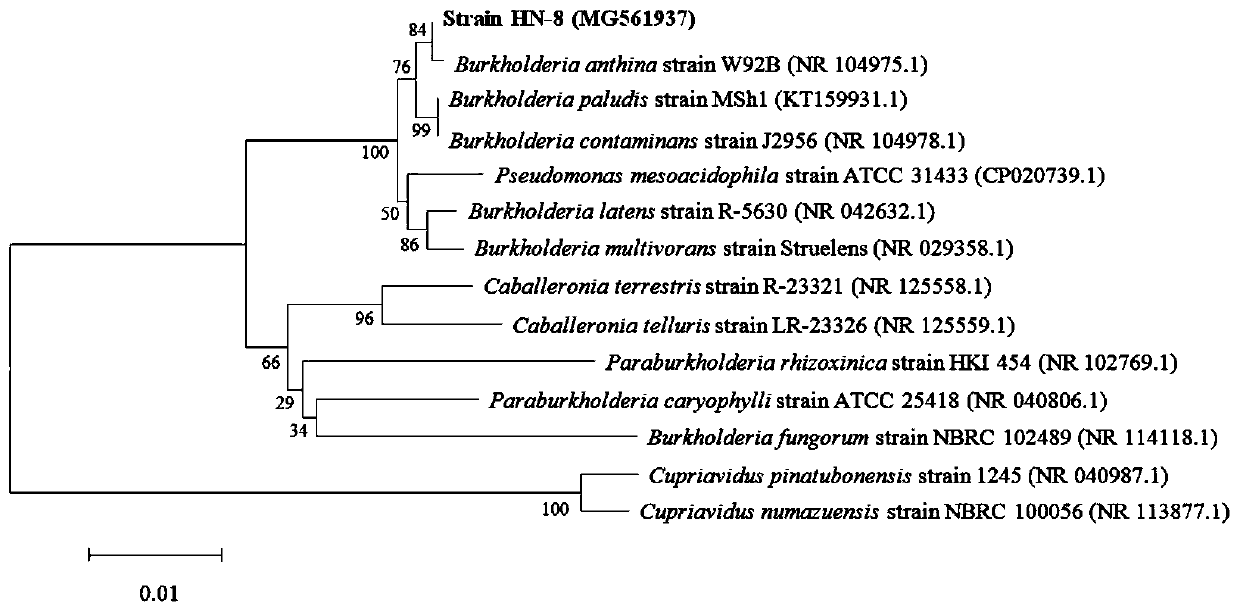A dsf quorum sensing signal degrading bacteria and its application in plant disease control
A quorum sensing signal, plant disease technology, applied in applications, plant growth regulators, microorganism-based methods, etc., can solve problems such as interference, achieve stable degradation performance, reduce the problem of antibiotic abuse, and have great application potential.
- Summary
- Abstract
- Description
- Claims
- Application Information
AI Technical Summary
Problems solved by technology
Method used
Image
Examples
Embodiment 1
[0045] The acquisition and identification of embodiment 1 Burkholderia bacterial strain HN-8
[0046] 1. Isolation and screening of strain HN-8
[0047] (1) Soil sample collection: The rice rhizosphere soil collected from the test field was used as the microbial source.
[0048] The soil samples were collected from the rice rhizosphere soil in the experimental field of South China Agricultural University in Guangzhou, Guangdong Province on June 23, 2016. The soil from the surface layer to the depth of 5 cm was sampled, bagged, and preserved as a microbial source for strain isolation.
[0049] (2) Enrichment culture of bacterial strains: prepare MSM medium, put 50mL of MSM medium into a 250mL Erlenmeyer flask for sterilization, add DSF mother liquor (methanol is solvent) under aseptic conditions after cooling, to make the final mass of DSF The concentration was 50 μM, and 5 g of soil samples were added at the same time, and after 7 days of incubation at 30 ° C and 200 rpm on a...
Embodiment 2
[0068] Antibiotic susceptibility analysis of embodiment 2 bacterial strain HN-8
[0069] In order to better study the biocontrol potential of the bacterial strain HN-8 obtained in Example 1, we studied the antibiotic sensitivity of the bacterial strain HN-8.
[0070] The result is as Figure 4 As shown, the resistance of the strain to ampicillin (AMP), carbenicillin (CARB), streptomycin (STR) reached 400 μg / mL or more, the resistance to tetracycline (TET) reached 200 μg / mL, and the resistance to Kanna The resistance to gentamicin (KAN) reaches 50 μg / mL, and the resistance to gentamicin (GEN) and neomycin sulfate (NS) reaches 10 μg·mL -1 , The resistance to rifampicin (RIF) and chloramphenicol (CM) is less than 10 μg / mL.
[0071] Antibiotic susceptibility results show that strain HN-8 has good antibiotic resistance, especially resistance to ampicillin, carbenicillin, and streptomycin. This result is not only conducive to the selection of appropriate antibiotics in subsequent ...
Embodiment 3
[0072] Example 3 The hydrolysis circle experiment of bacterial strain HN-8 degrading DSF
[0073] In this example, the solid MSM medium plate with DSF as the sole carbon source was used to measure the hydrolysis circle generated by strain HN-8 degrading DSF.
[0074] 1. Prepare MSM solid medium, add a certain amount of DSF mother liquor as the only carbon source, so that the final concentration of DSF is 5mM. Pick a single colony of strain HN-8 and inoculate it in LB medium to pre-culture to the logarithmic phase. After centrifuging the obtained bacterial solution at 4000rpm for 5min, discard the supernatant, wash and resuspend the bacterial cells with 0.9% sterile normal saline, As a seed suspension. Take 0.5 μL of the seed suspension and place it on a solid MSM plate with 5 mM DSF as the sole carbon source, place the medium plate at a constant temperature of 30°C, and observe the hydrolysis circle after 72 hours. In order to ensure the reliability and accuracy of the exper...
PUM
 Login to View More
Login to View More Abstract
Description
Claims
Application Information
 Login to View More
Login to View More - R&D
- Intellectual Property
- Life Sciences
- Materials
- Tech Scout
- Unparalleled Data Quality
- Higher Quality Content
- 60% Fewer Hallucinations
Browse by: Latest US Patents, China's latest patents, Technical Efficacy Thesaurus, Application Domain, Technology Topic, Popular Technical Reports.
© 2025 PatSnap. All rights reserved.Legal|Privacy policy|Modern Slavery Act Transparency Statement|Sitemap|About US| Contact US: help@patsnap.com



